After a Medicaid recipient dies, the state attempts to recoup whatever benefits it paid for the recipient’s care from the decedent’s estate. This is called “estate recovery.” For most Medicaid recipients, their house is the only asset available, but there are steps you can take to protect your home.
Life estates
For many, setting up a “life estate” is the most appropriate method to protect the home from estate recovery. A life estate is a form of joint ownership of property between two or more people. The person holding the life estate possesses the property currently and for the rest of their life. The other owner cannot take possession until the end of the life estate, which occurs at the death of the life estate holder.
Example: Jane gives a remainder interest in her house to her children while retaining a life interest. Jane has the exclusive right to live in the property for the rest of her life. She is responsible for the costs of maintenance and taxes on the property during her life. However, the property cannot be sold to a third party without the cooperation of the children.
When Jane dies, the house passes automatically to her children and the state cannot recover against it for any Medicaid benefits the life estate holder may have received. Although the property will not be included in Jane’s probate estate, the property will be subject to Pennsylvania Inheritance Tax. However, the upside is that this can mean a significant reduction in the tax on capital gains when the kids sell the property because they receive a “step up” in the property’s basis.
As with a transfer to a trust, if you transfer your home to your children and retain a life estate, this can trigger a Medicaid ineligibility period of up to five years. Purchasing a life estate in another home can also cause a transfer penalty, but the transfer penalty can be avoided if the individual purchasing the life estate resides in the home for at least one year after the purchase and pays a fair amount for the life estate.
Trusts
Another method of protecting the home from estate recovery is to transfer it to an irrevocable trust. Once the house is in the irrevocable trust, it cannot be taken out again. Although it can be sold, the proceeds must remain in the trust.
Contact one of our Certified Medicaid Planners at (570) 784-4654 to discuss which option is best for you.


